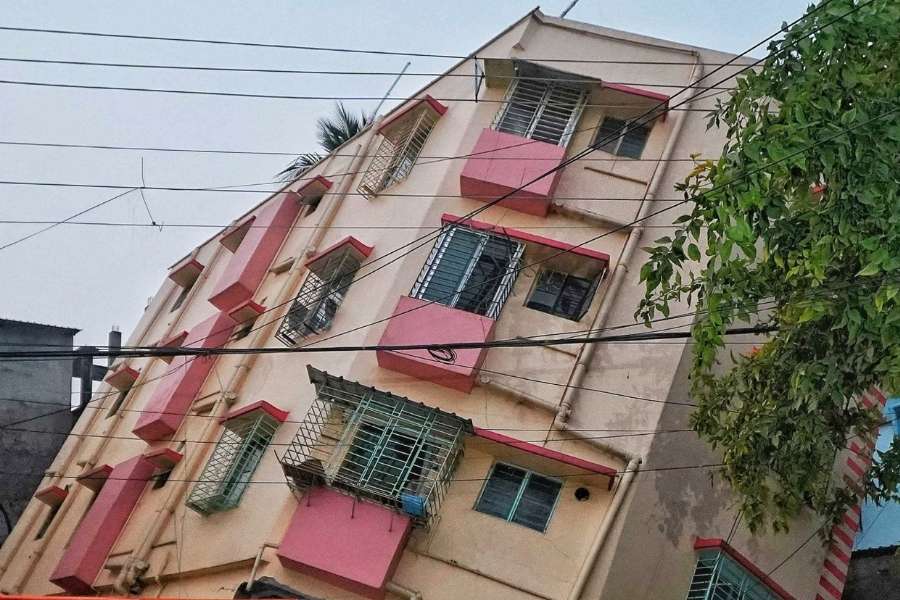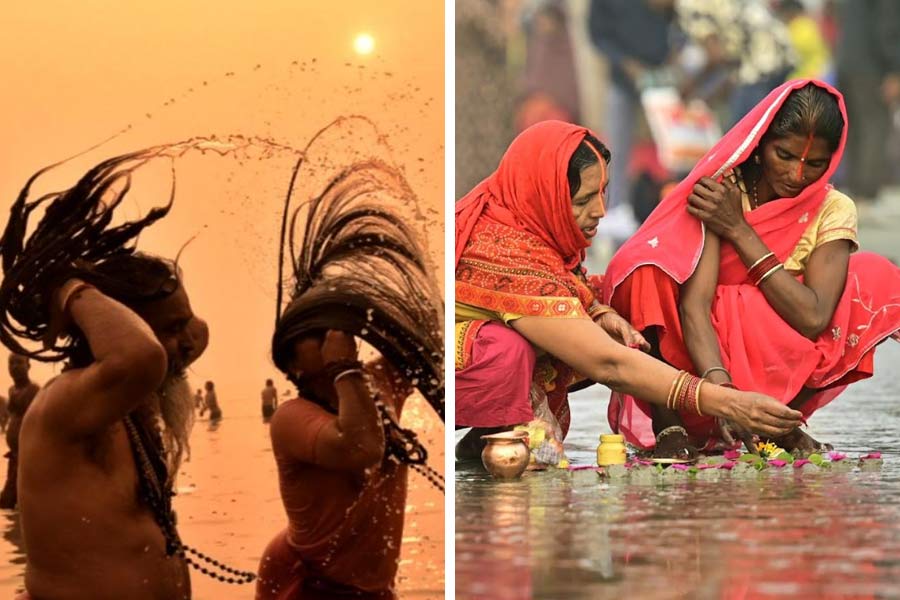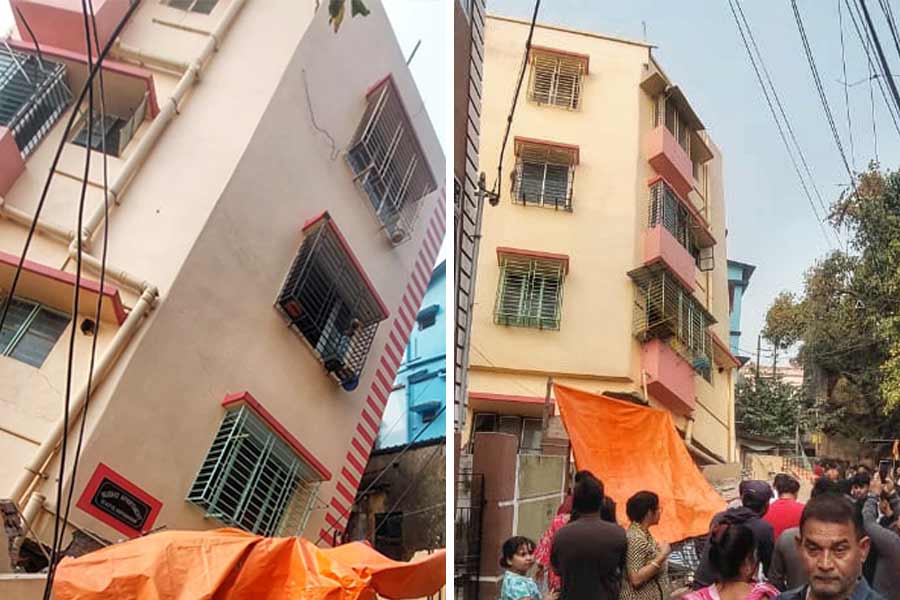 Wednesday, 15 January 2025
Wednesday, 15 January 2025
 Wednesday, 15 January 2025
Wednesday, 15 January 2025
Who could have dreamt that a hijacking nearly 25 years ago would spark such a firestorm of anger? But that’s been the offscreen impact of IC 814: The Kandahar Hijack and the Netflix miniseries’ producers have been facing a barrage of criticism from all sides.
The motive behind the hijacking of IC 814 carrying 176 passengers and crew is uncontested. It was orchestrated solely to secure the release of prominent Pakistani jihadist leader Masood Azhar. Negotiators, led by national security adviser Ajit Doval, were convinced at one point they had a deal — just Azhar, no extras. “If we'd had whisky there, we’d have popped the bottle,” a senior government official recounts.
But then, the Taliban tossed in extra demands believed to have been almost certainly dictated by Pakistan’s ISI that prolonged the passengers’ eight-day harrowing ordeal.
At the start of negotiations, the five hijackers demanded the release of 31 people in Indian jails plus a $25-million sweetener. These were quickly hammered down.
But a big complication was that it was Ramzan, so negotiations could take place only at night after the Taliban had sated themselves on their evening feast. Doval usually led negotiations for three hours every night. There were moments when the Indian team felt threatened, despite Taliban assurances nothing would happen to them on Afghan soil.
Ultimately, the government agreed to the hijackers' key demands: The release of Mazood Azhar, who went on to found Jaish-e-Mohammad – the army of Mohammad – which attacked Parliament in 2001 and staged other spectacular terror raids on Indian soil; British-born terrorist Omar Saeed Sheikh, later accused of the murder of journalist Daniel Pearl; and Kashmiri militant Mushtaq Ahmed Zargar.
Inevitably, there are complaints from former intelligence officers about the show's portrayal of the events. The biggest is that in the last episode, an Afghan official heads off for a consultation with Osama Bin Laden. This has triggered claims the scriptwriters were keen to turn attention away from the ISI.
Adrian Levy, who co-wrote ‘Spy Stories: Inside the Secret World of the R.A.W. and the ISI’ in 2021, is suspected by some officials of spinning the story to deflect blame from the ISI. They contend Levy got more cooperation from the ISI when writing his book and this might have influenced the narrative twist.
Officials insist the hijacking’s mastermind was clear from the start: Masood Azhar’s brother and his ISI backers. “We knew 15 minutes after the hijacking had taken place that this is a group aligned with Masood Azhar and the only demand they will have will be for his release," says an official.
“There was no doubt in our minds that people like Azhar and Hafiz Saeed [of Lashkar-e-Taiba] don't operate without the support and concurrence of the ISI,” says one.
India’s international sleuths say they knew the hijacking was orchestrated by Azhar’s brother with ISI support very soon after it happened.
There had already been several plots to force India to release Azhar. Saeed had attempted to take a group of foreign tourists hostage in 1994 to free Azhar but the Intelligence Bureau (IB) foiled his attempt after a shootout and he ended up in jail.
Then, terrorists belonging to a group that called itself Al Faran seized six foreign hostages in Kashmir a year later to secure Azhar’s release. Negotiation attempts failed and only one hostage escaped, another was beheaded and the rest are presumed dead.
There has also been a social media storm alleging the miniseries conceals the identities of the five Muslim hijackers by giving them common Hindu names that include Bhola and Shankar. But these were the code names used by the terrorists during the hijacking. Netflix officials were summoned to the information and broadcasting ministry this week.
To defuse the row, Netflix has updated the series’ opening disclaimer to include the real names of hijackers who were from Pakistan. There are also charges that the hijackers are portrayed too humanely. But passengers say there were some small gestures of kindness, including celebration of a passenger’s birthday. The controversy “is needless,” says passenger Pooja Kataria, adding “true events have been depicted”.
Critics argue storming the plane during its brief Amritsar stop might have been an option. Former R&AW chief A.S. Dulat said on a TV show that the government’s crisis management group (CMG) under the cabinet secretary had dilly-dallied. “The clear instruction never went [to storm the plane]. It was a failure of the CMG,” says Dulat.
However, other officials highlight that such operations – like the successful Israeli one at Entebbe – are complex. They are usually done after wearing down hijackers with hours of negotiation and getting an idea of where each terrorist is in the plane and how they are armed and their state of mind. “Once the plane went to Kandahar, what options were we left with? We were playing with a very weak hand. Our prime concern was only the safety and lives of those people,” one official notes.
Also, in Kandahar, the hijacked plane was parked near the terminal while the relief plane carrying the officials was at the other end of the runway, nearly 2 km away.
Former R&AW officers are also fuming over scenes that show an operative torturing a Nepalese man who’s finally forced to admit that he knew a bag containing RDX had been placed in the plane. In the six-part series, an R&AW agent named Yadav is shown trying to stop the flight from taking off because he had received a warning about the hijacking. All the scenes and the incidents that were supposed to have happened in Kathmandu are fictional, the officials insist.
Was there a warning that a hijacking was being planned? Says Anand Arni, former cabinet secretariat special secretary: “Maybe there was one line somewhere but there was nothing of any consequence. There was no warning to us at all.” Arni headed the R&AW Pakistan Desk at the time and was part of the government team in Kandahar. Arni also says the hijackers were armed with knives to start with and only started brandishing pistols after their brief stopover in Lahore.
Dulat recalls that there was a Christmas Eve function at the R&AW when he was called for a meeting of the government’s crisis management group. He reckons that it convened about 30 minutes after the Kathmandu control tower received word the plane had been hijacked. Dulat adds that there was talk about a bag of RDX on the plane but it has never been confirmed.
In reality, the most closely guarded secret was that the R&AW Kathmandu station chief was on board. Indian government officers ensured his name was never released and the hijackers never got to know he was on board. The slightest hint that he was on board might have been fatal and the government officers depicted in the show kept it a total secret.
Unknown to the hijackers, there was another passenger on board who would have been worth much more than the $25 million they were demanding from the Indian government. That was Swiss-Italian Roberto Giori, director of De La Rue-Giori, a Lausanne-based company that had a virtual monopoly at the time on the design and production of banknotes around the world. He and a companion were on board the flight and the Swiss government was desperate to get him out unharmed.
Not a whisper about Giori being on the plane was allowed to become public.
The weakest moments in the generally fast-paced, tautly written show are the ones that take place in a newspaper between an editor and an aggressive reporter who wants to disclose sensitive information that could have jeopardised the lives of the airline passengers. In real life, such conflicts are unlikely when lives are at stake. Interestingly, though, it should be noted that a journalist was actually the first person to get news of the hijacking before anyone at the intelligence agencies.
There are other minor quibbles about the show. The intelligence officer from Nepal clicks his heels in military fashion when exiting the room after meeting his boss. That’s not usually done in the intelligence services.
The show unfolds, firstly inside the plane which is taken over by the hijackers minutes after taking off from Kathmandu airport, where everyone admits security was not painstaking. The second drama unfolds as senior government officials figure out how to tackle the crisis. It’s gripping television even for viewers who don’t usually watch Hindi shows.
The scenes on board the plane are based mainly – and the show acknowledges this – on the book ‘Flight into Fear: The Captain’s Story’ written jointly by the chief pilot Devi Sharan and senior journalist Srinjoy Chowdhury. The brutal murder of honeymooner Rupin Katyal, the hijacking’s one fatality, is a particularly chilling scene.
Intelligence officers remain full of praise for the 14-member crew led by Sharan and the plane’s 162 passengers – mostly Indians – and say they behaved with great courage. Says one person who was on the spot in Kandahar: “The hijackers forced passengers to sit with their heads bent for hours on end. The conditions on the plane also became appalling very swiftly and many passengers ate the minimum possible so they wouldn’t need to visit the toilet.”
Some intelligence officers involved in the incident suggest that even now after 25 years, Air India (the successor of Indian Airlines) or the government should give some recognition to the passengers. “It could be a cup of tea, it could be anything,” says one intelligence officer.
Swiss-Italian tycoon Giori, whose name isn’t mentioned in the show, was even stronger in his praise. Giori told Time magazine: “What I experienced on the plane has changed me forever. I don’t know what it is: Hinduism, the so-called fatalism of Indians. But the way the passengers stayed so calm throughout, even the children, was exemplary. I told myself, if the plane had been full of Italians or French, it would have been very different."







